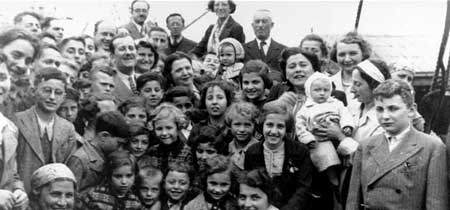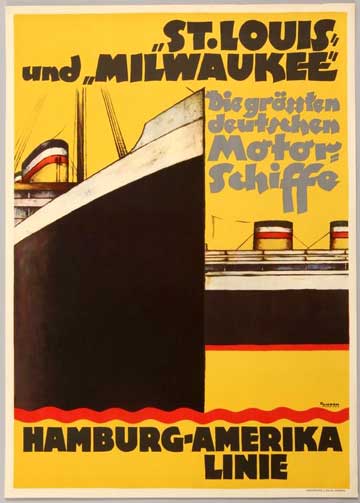Play, Video Performance (2021)
A new virtual documentary theater piece
Conceived and Directed by Igor Golyak
Written by Nana Grinstein, with Blair Cadden and Igor Golyak
A (Zero-G) Virtual Theater Production
Arlekin Players
Scenography and Costume Design by Anna Fedorova; Virtual Design by Daniel Cormino; Sound Design by Viktor Semenov;
DP/Editor: Anton Nikolaev; Produced by Sara Stackhouse
Featuring the Arlekin Acting Company
December 10, 2021 – January 23, 2022

In 1939 many hundreds of Jews board the Hamburg-Amerika Line vessel St. Louis from Hamburg, Germany, with the thought of escaping the Nazis and finding new lives in Cuba. When they arrive in the port of Havana, they are refused entry. Various appeals for permission for the passengers to disembark are made to local governments, including that of the United States, all of whom refuse them entry. Ultimately, the ship returns to Hamburg, and most of its passengers wind up perishing in the Holocaust.
The Arlekin Players’ rendition of this story is, to say the least, impressionistic. Though set on a video simulacrum of the St. Louis and appearing to give some accurate sense of being there, the narrative easily and frequently takes turns in all sorts of ways. Initially, there is a playful and comedic gesture, theoretically echoing the festive sensibilities of those who thought they were escaping Europe. A lot of clips and stills from the actual St. Louis fill out the video simulation and the monologue carried out by the principal character, a kind of emcee and protagonist rolled into one.
This festive atmosphere turns when the ship is refused entry and a long series of smaller episodes prevails. One of these is carried on in the hallway of the simulated ship with a cast that appears to both be playing roles on the ship and in the contemporary world. There is talk of events from close to the present day related to anti-Semitism – the murders in a Pittsburgh synagogue and even a reference to the hostage-taking in a synagogue in Texas over the past weekend.

In another room of the ship, some kind of wedding celebration is taking place, seemingly among Russian Jews who don’t necessarily know too much about Jewish ritual. It’s not quite clear how that fits in with the rest of the narrative, but this is part of the impressionistic aspect of the piece that gives it a bit of a disparate feeling, though its variety of themes, time contexts, and styles of dialogue all are suggestive of things having to do with Jewish emigration, dislocation and the anti-Semitism which brought it about.
There is in this piece, as in the Golyak-directed version of The Merchant of Venice done this fall by the Actors’ Shakespeare Project, an intentional and forced hilarity at the outset which gives way in the latter half to a sober reflection on more serious themes. This introduction of humor segregated from the tragic aspects of the story does not bear traits of a lot of Jewish humor, which in the midst of tragedy manages to eke out an ironic smile. One wonders whether this starker separation of the hilarious from the tragic might be derived from Russian rather than Jewish sensibilities – hard to tell.
Actors use multiple languages in this production. I identified English, Russian, Hebrew, German and Spanish, but there may have been more. It’s an interesting amalgam, and, one must say, The Arlekin Players and artistic director Igor Golyak have a lot of guts for doing what they do. Even if it does not quite cohere, it clearly has heart and a great deal of thoughtful motivation behind it.
The video simulation of the ship and the associated visual compilations are very impressive. How this is done, and whether it is all filmed or whether some of it is live is not clear from the production, which runs at specific times, more like a theater piece than like a film.
– BADMan (aka Charles Munitz)
Leave a Reply